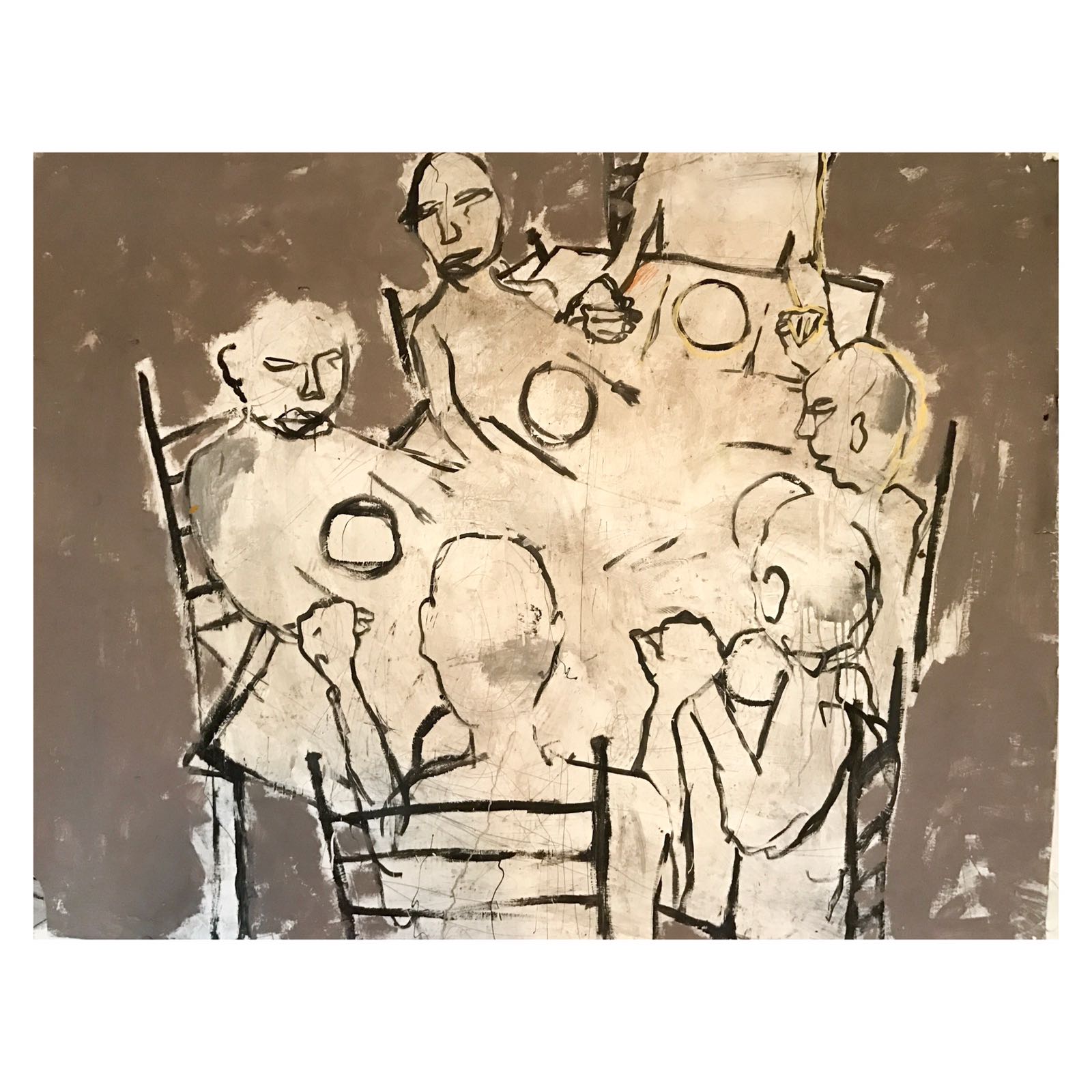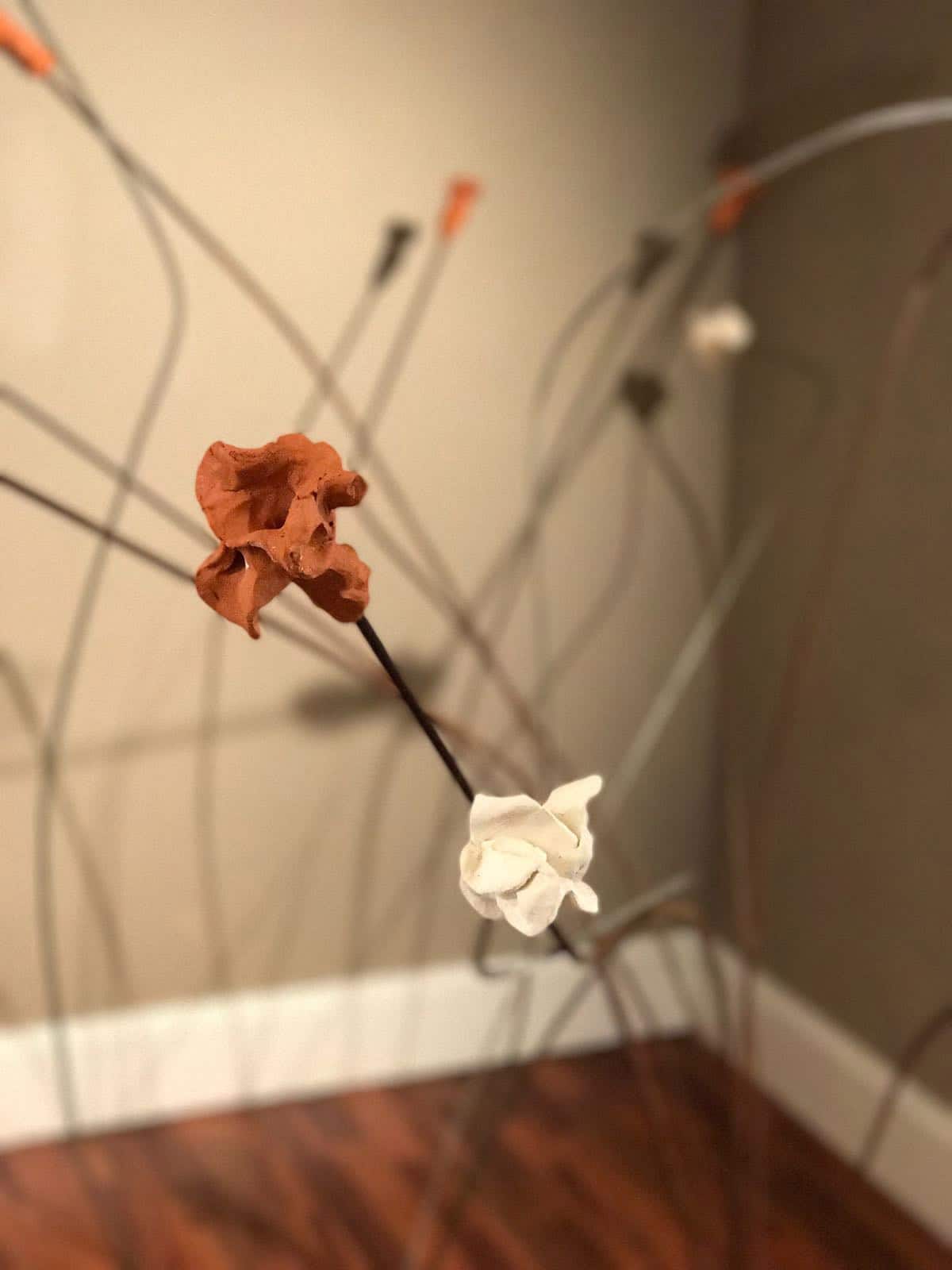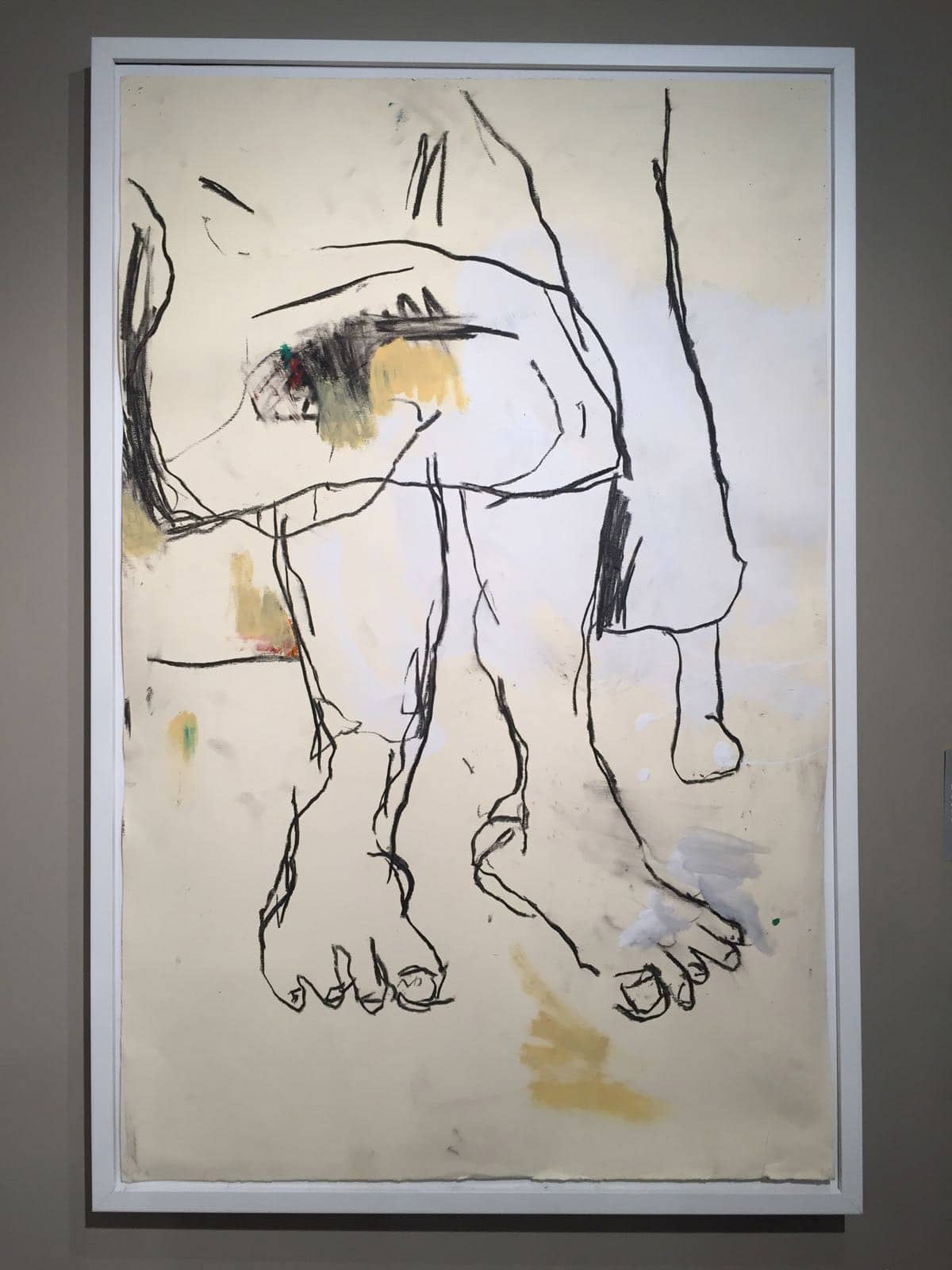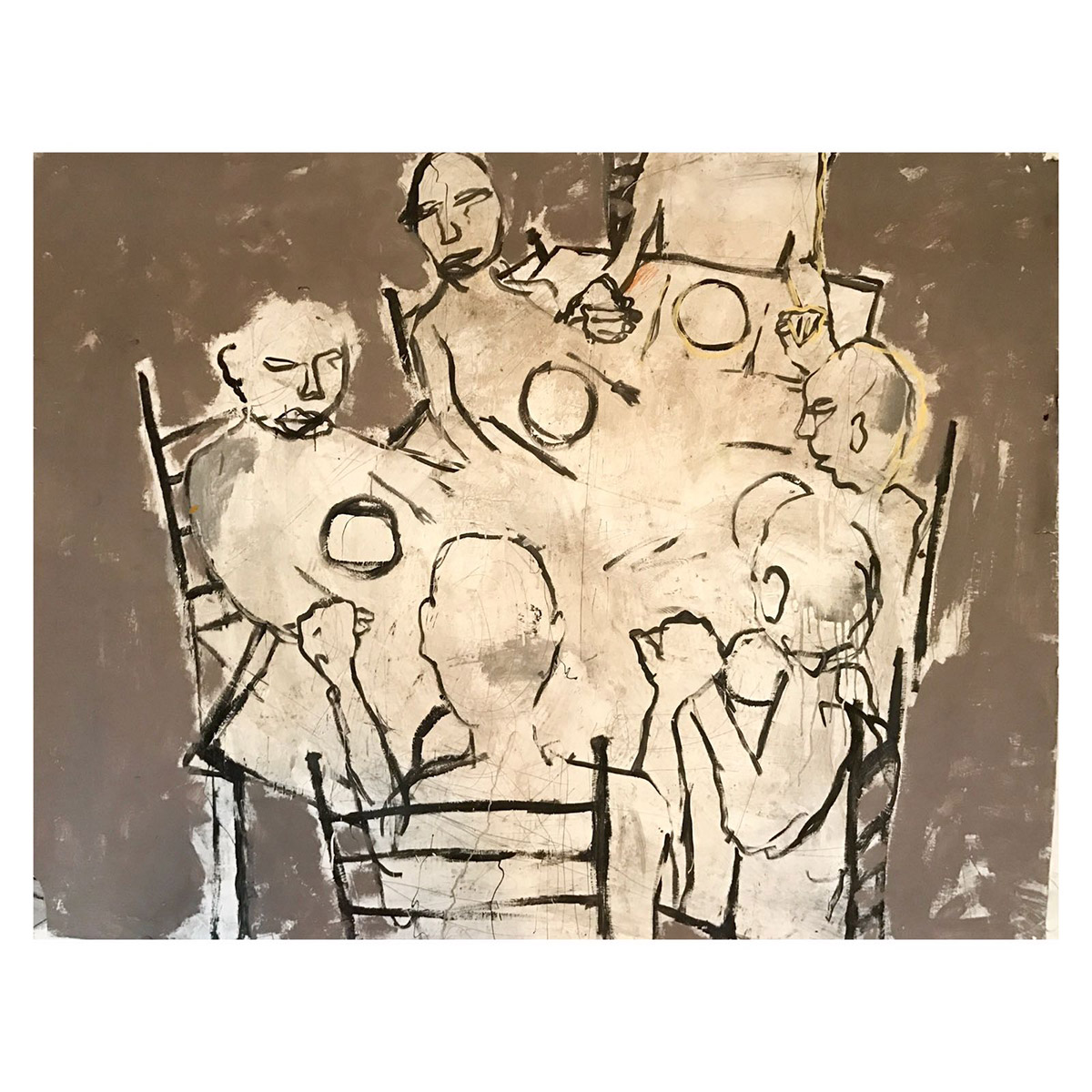
By Dr Ian Bethell-Bennett
When we are taught to ask for directions in what we are to think, what we are to say and what we are to do, we run into a figurative bind of being stuck in uncreativity and the superficiality of a surface. Heino Schmid’s work does not fit into any of these unthinking paradigms. As I walked through his show “wait. I saw something,” which opened at the D’Aguilar Art Foundation on Thursday, February 8th, I had to think about the work. The work is not trouble-free art that covers a wall or adorns a room with its ease of access and prettiness, but an abstraction that made me think about many things.
Schmid’s flowers, a piece a called “Here there is one season” is a metal installation with long, angular and somewhat irregular stalks, almost resembling tulips with tulip-like protrusions on the end caught my attention. Perhaps because it was so distinct from everything else present, but also because it was so odd; tulips but not quite tulips, flowers are not always what they appear. In life, we tend to like the ease of recognition. For some, they reject whatever they do not identify easily.

Heino Schmid. “Here there is one season”. 2017/2018. All images courtesy of the D’Aguilar Art Foundation.
It is simple; when we are taught to accept, not to demand that everything be what we think it need be, then we move into a different sphere of living. However, that area, as I see on a daily basis, tends to be frowned upon by learners. We do not want to think; we would rather have someone else think for us and tell us what they think so that we can think it too. In our search for acceptance, we tend to gravitate towards ease, towards, ‘normalcy’, towards looking a sure way to fit in or conform.
Schmid’s work pushes boundaries and ideas so it is not confined to a tightly controlled space in which nothing can develop fully. There are some real abstractions within the landscapes with lines and symmetries that bring to mind many other places. The flowers and the landscape as mentioned earlier is simultaneously appealing, yet not. It is beautiful, but not in the commonly accepted and promoted way that beauty and the sublime is usually represented with lovely colours, smooth lines and easily identifiable. The form is unique and with that uniqueness comes troubling questions, like the form expressed in “Ma II,” which presents his grandmother’s legs, and in “Mass” where a congregation of people sit for a meal, the distorted figures meld and flow all at the same time. There is at once freedom and a conflict with the density of line and form.

Heino Schmid. “Ma II”, acrylic, charcoal and oil pastel on paper. 2018. All images courtesy of the D’Aguilar Art Foundation.
Schmid’s “wait. I saw something” is well worth a walk through as it makes us challenges our conceptions of what we see as art and how art is ‘supposed’ to look. He departs so well from the boutique image we are becoming so comfortable with, an image that tends to keep us reframed in Univision. Schmid’s flowers, as odd as they are, are refreshing and provide relief from being asked what to think. The thought process is so freeing and so expansive that we can begin to open ourselves to creativity.
Schmid’s exploration of the landscape comes to the public at an exciting and significant moment in time, when Bahamian are being asked to change the way they think or approach many core issues : female equality, modes of financial access, new technologies. Will our countrymen and women be able to think out of the box, to change their points of view and accept new methodologies when traditonally we have been schooled how to think already?

Heino Schmid. “Mass”, acrylic on paper. 2017/2018. All images courtesy of the D’Aguilar Art Foundation.
Lorna Goodison, poet and artist, once wrote, “To Us, All Flowers Are Roses,” (University of Illinois Press, 1995). I find this poem and pure beauty captures the feeling of Schmid’s flowers for me. Their beauty is not skin deep but oh so shockingly there, waiting for the viewer to see it. They provide a counterpoint, a relief from the doublespeak and non-movement as each year things worse, as people embrace further backwardness.
The perplexing outmoded, yet forward leaning of a nation in transition and chaos, is so starkly ‘abstracted’; when we cannot challenge it through our ability to think our way out of the current lack of creativity and D average that has brought us to a time pass our demise. The ease of abstraction is that it gives us the ability to create our meanings and accepts our experiences as valid. The ability to sit with abstraction and to find new ways of seeing and adapting antiquated systems is beauty in the rough. However, we seem to be choosing to fall for the obvious charm of soft and alluring and allowing the potential of abstraction and thought to pass us by.

